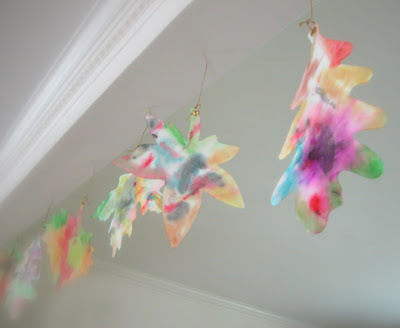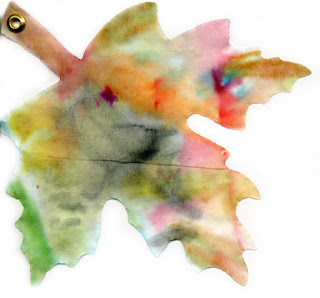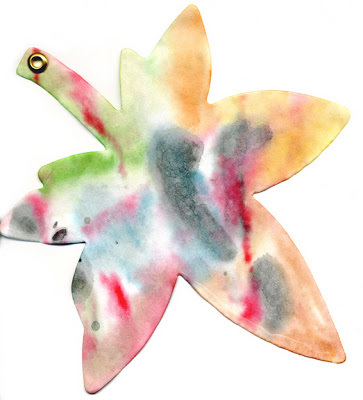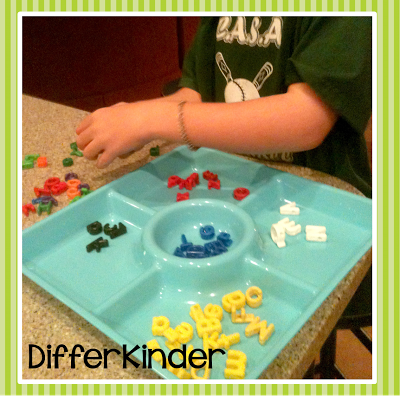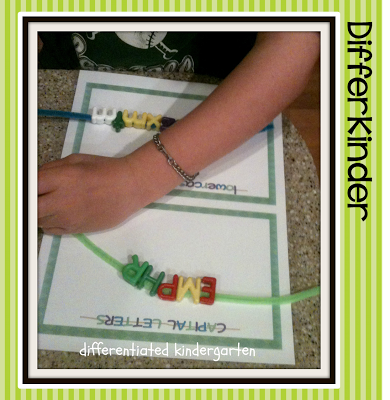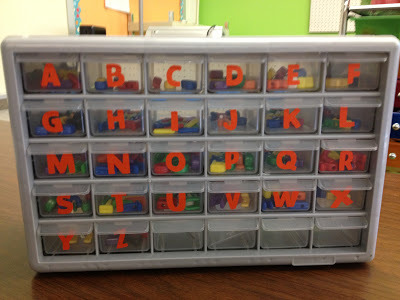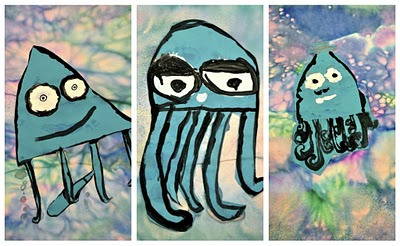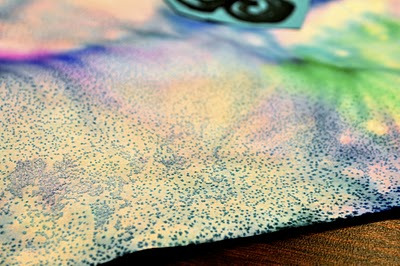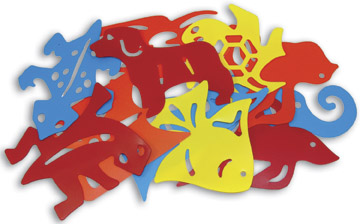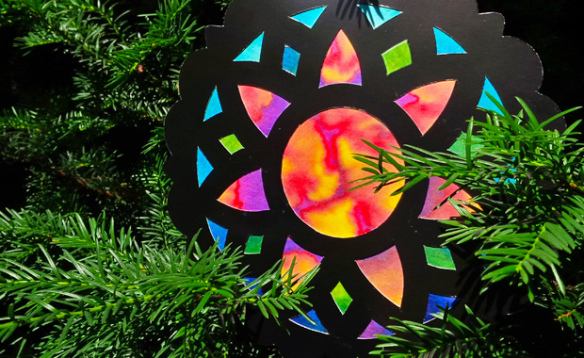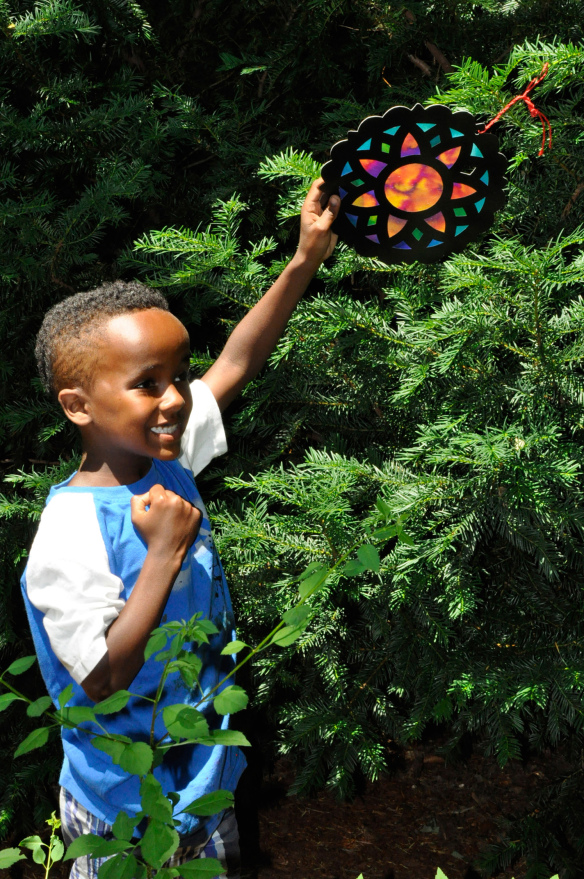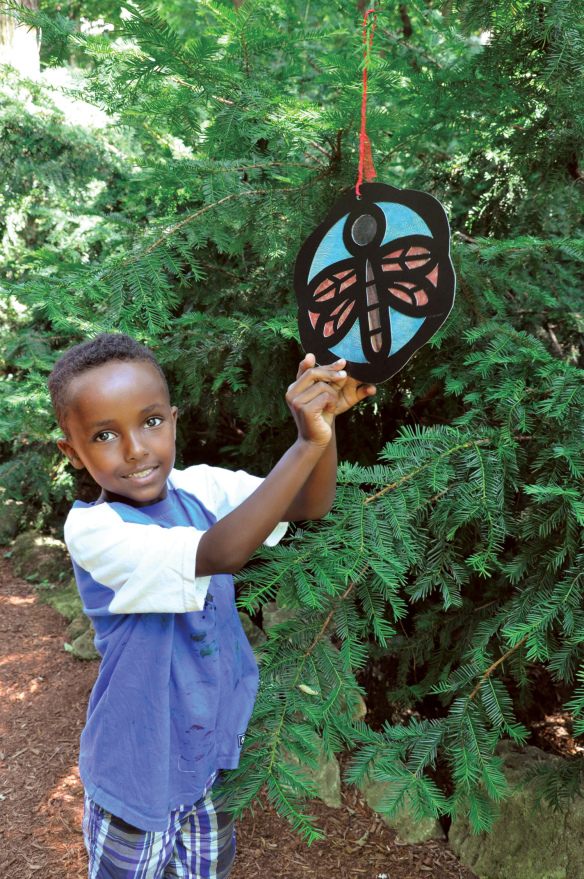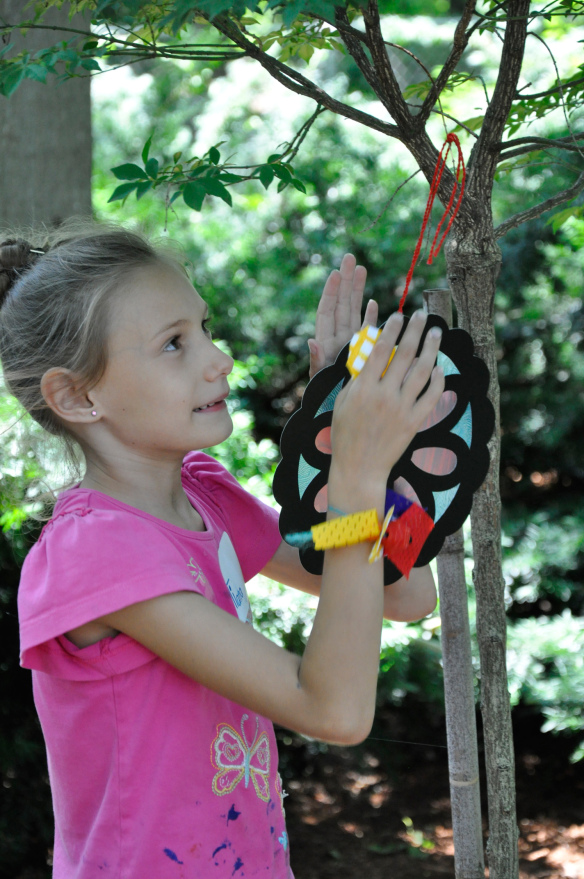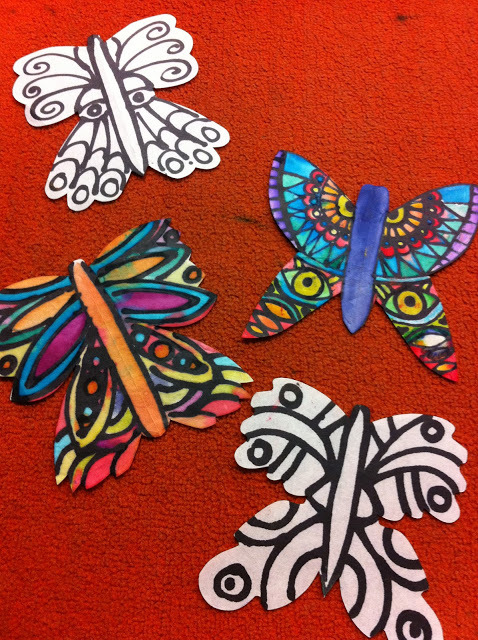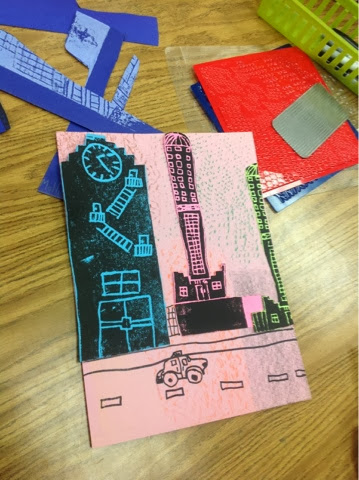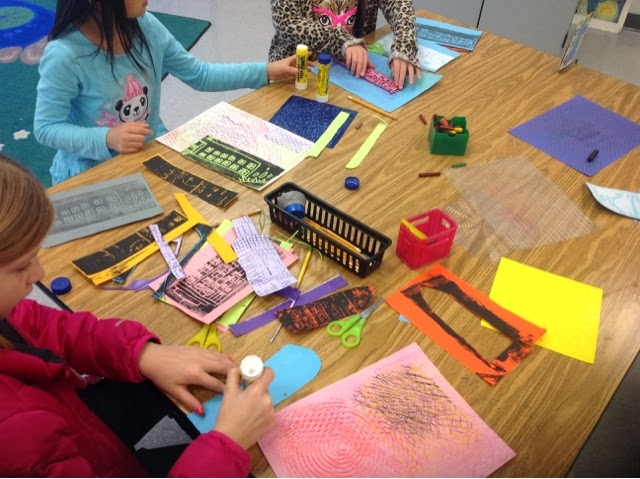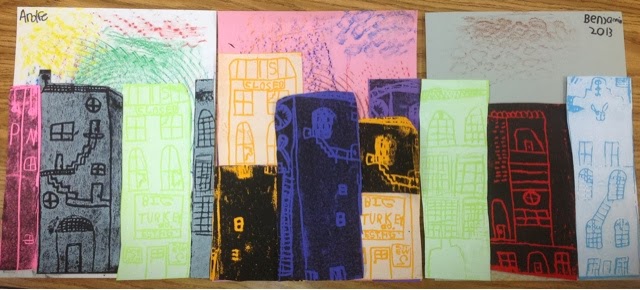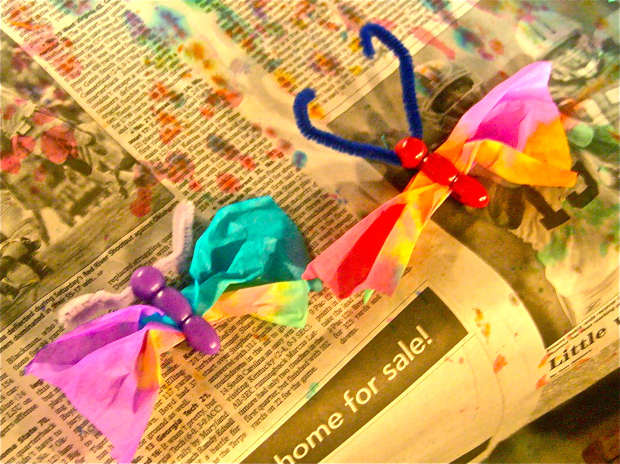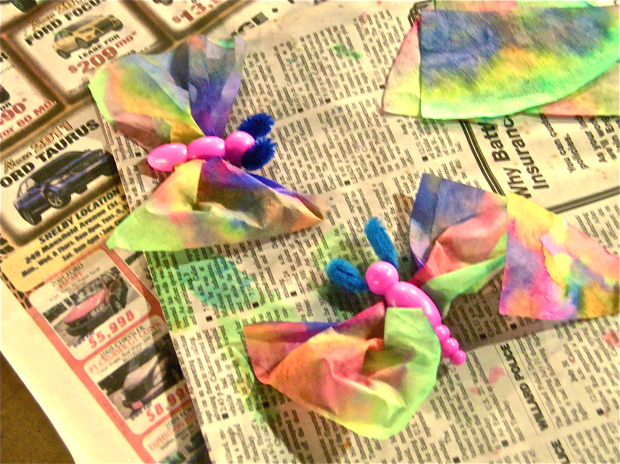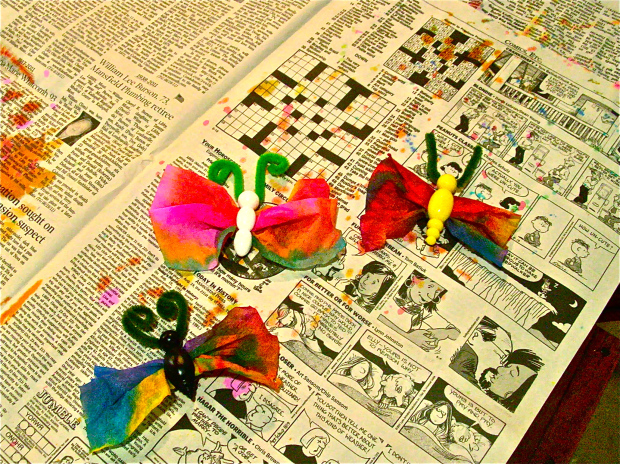I absolutely adore the variety of designs that the Color Diffusing Leaves can be used to make. No two are alike–literally! This beautiful assortment of leaves were made from watercolor paint diffusion.
Wendy published this craft post on September 24, 2008. To read more about the post entitled, “Celebrating Autumn” click here!
A neat addition to the colorful leaves is the grommet, with which Wendy attached in order to make it easier to hang the leaves from the ceiling. This is a great idea for making a garland too! Thread the leaves onto a length of string and hang the garland across a classroom wall.
Wendy also recommended trying crayon and colored pencil to produce a paint-resist effect. This would be a great technique to try out sometime!
Thanks to Wendy for this post!
Images and original post © Mother Rising.
This post was not sponsored for a review. At LittleFingersBigArt, our mission is to present to our readers and viewers the newest and most creative craft ideas that fans of Roylco have made on their own. Our goal is to allow you and other educators and parents to reuse our products in fun ways so that children always get the best educational experience from them!
We’d love to see more ideas like this one! If you’ve got a brilliant craft idea or have made a version of one of our crafts that you would like to share with us, send an email to us with photos, descriptions or a link to your work. We will create a feature post and link back to you with full credit. Contact us through the contact form for more details. We’d love to hear from you!

